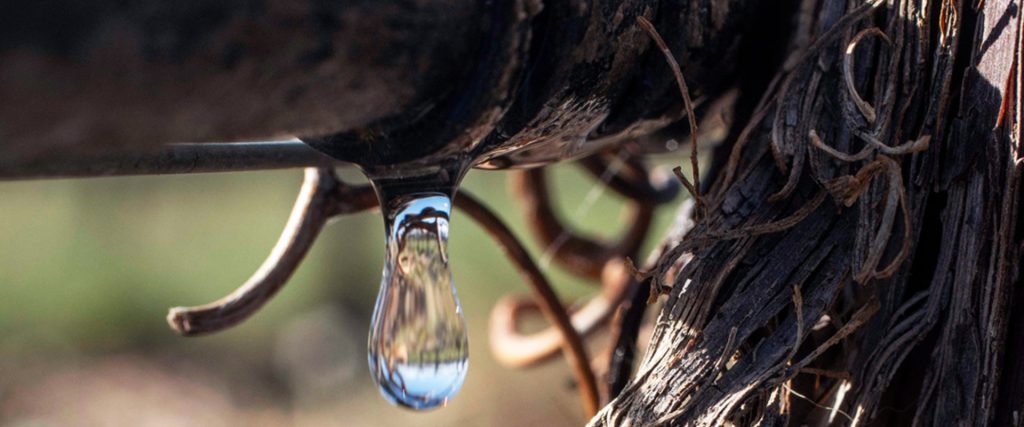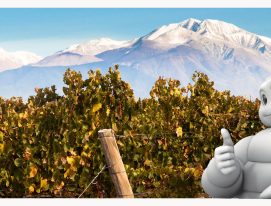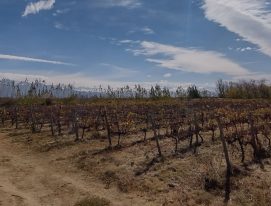Achieving sustainability is an increasingly urgent issue and in the middle of a water crisis, taking care of water resources at Argentine wineries and ensuring that they are used efficiently has become one of its most critical aspects. Vines need this increasingly scarce resource, albeit in lesser quantities than other crops, and most of the viticultural regions in the country are located in semi-desert areas, so irrigation has become a fundamental theme.
Water resources at Argentine wineries
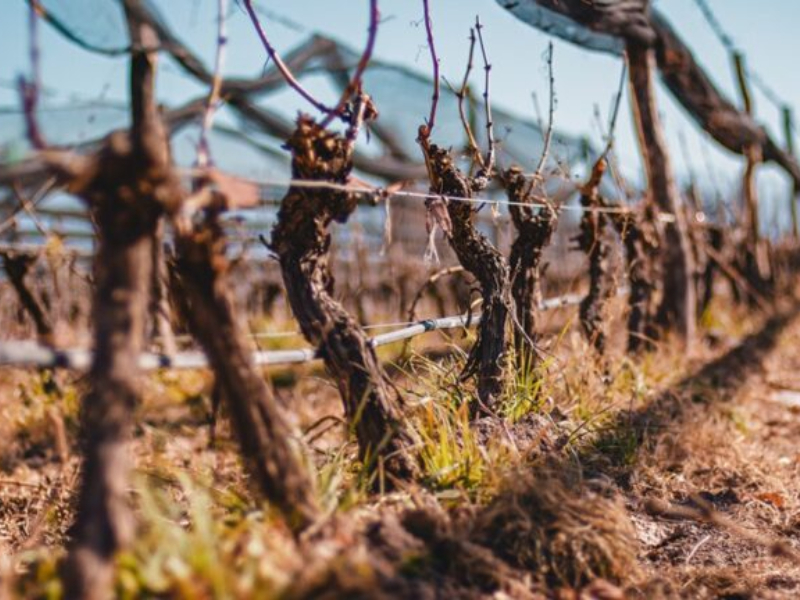
Water resources at Argentine wineries are used during different stages of the production process meaning that wineries must not just take action in the field but also at their production facilities to optimize its use and raise awareness of this need among their teams.
Florencia Seca, who is Head of Regulations, Quality and Sustainability at Bodega Don Cristóbal, says that the winery has been implementing sustainability initiatives since the early 1990s. As a company that exports 80% of its output, the requirements of different markets, along with their business philosophy, ensured that they have always had a keen sense of environmental responsibility.
“Our working methods are focused closely on measuring and quantifying all of our procedures. One of our main objectives is to measure our water footprint and we provide training and periodic refreshers on the responsible use of water. At Don Cristobal we have 147 hectares of organic vineyards divided across four estates in Ugarteche, Rivadavia and Junín, of which 130 are watered through drip irrigation. One of our next objectives is to measure our water footprint.
“Every millimeter of water that we provide to the plant through irrigation has to be justified, which is why we compile a model based on climatic data about the area the vineyard is in, the crop, the species of weeds and grasses that grow around it and other parameters to determine the exact amount of water the plants need at different periods of the year,” says Seca.
The advantages of drip irrigation
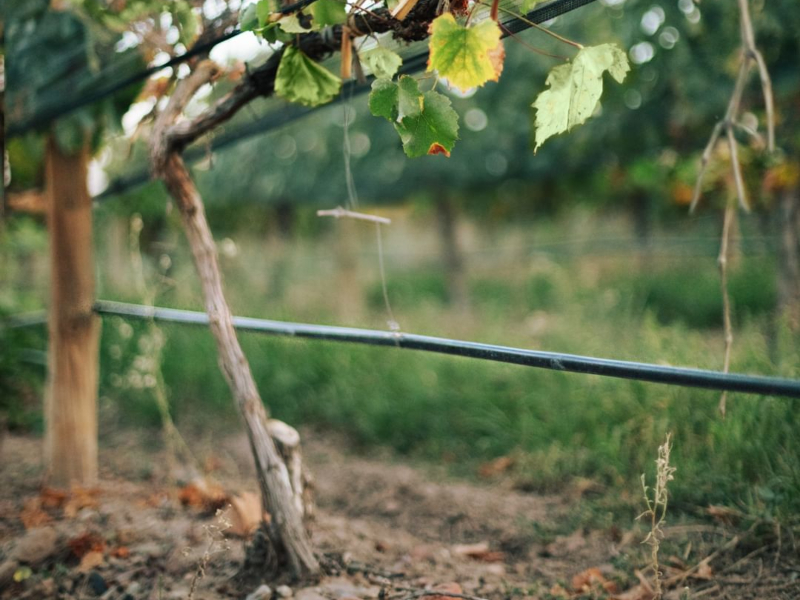
When it comes to rational use of water resources at Argentine wineries, drip irrigation is the most efficient system, providing 95 to 100% efficiency in the use of water. In comparison, sprinkler systems are 80 to 85% efficient and the flood irrigation method offers 40 to 60% efficiency. That is why for over three decades Argentine wineries have been choosing drip irrigation although vineyards that use the method are still in the minority nationwide.
One of the pioneers of its implementation in Mendoza was Pulenta Estate (which belonged to the Grupo Peñaflor at the time), also in the 90s. “With drip irrigation, of every 100 liters, 95 get to the plant as intended. Surface irrigation, in contrast, is only 40% efficient. This means that drip irrigation is a substantial improvement and it should be a goal across the world, but especially in Argentina,” says Facundo Yazlli, the agricultural engineer at the winery.
Meanwhile, Javier Lo Forte, the oenologist at Pulenta Estate, adds that in addition to having 100% of the vineyards running on drip irrigation, for several years now they have been re-using all of the water they consume for agricultural uses. “All the water we use, in the production process, cleaning the tanks and machinery, and bottling, is treated and then re-used in our gardens and vineyards.”
A leap in quality
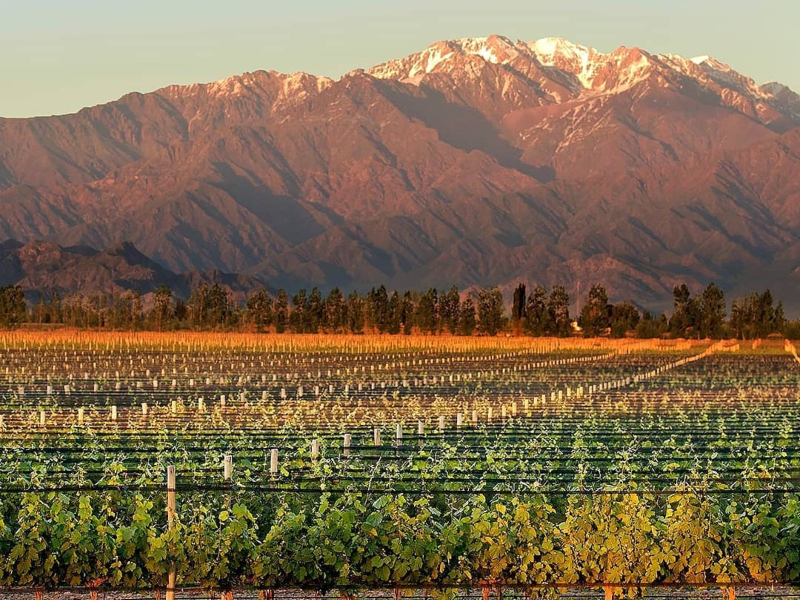
Bodega La Celia have installed drip irrigation at all of their five hundred hectares of vineyards. The establishment, which was a pioneer in the Uco Valley, isn’t just certified in the Bodegas de Argentina sustainability protocols, they also measure their water and carbon footprints.
“The amount of water we use strikes a balance with the rainfall we receive – which is barely any – and the amount of water the plant needs. We are always aware of evapo-transpiration and use that to decide week by week how much water to give our vineyards. We also have sensors and are implementing a platform that provides us with even more detailed information about irrigation,” says Agustín Leiva, the agricultural engineer at La Celia.
Leiva adds that the amount of water required is also determined by the division of parcels at the vineyard and their different levels and yields. All these details mean that efficient irrigation isn’t just good for the environment, it has also helped to improve the quality of the wines.
“We’ve seen that the resulting wines express the unique aromas of the area with greater purity. This is enhanced by earlier harvests in terms of ripeness,” says Andrea Ferreyra, the oenologist at La Celia.
Social impact
In the case of Foster Lorca, Carina Barros, the Head of Quality at the winery in Luján de Cuyo, reports that within their overall sustainability initiative (certified in 2022), water plays an important role. Both at the winery and the vineyard they implement a range of measures at different levels, from fixing any leaks to blocking irrigation pipes where necessary to the re-use of the water consumed during the labeling process to spray or drip irrigation in the vineyard.
To achieve that, the first step was to train the staff. “If our workers aren’t aware, it can be very hard to implement the protocol,” says Barros. Their efforts have been met with success: over the past year, they have managed to reduce water consumption by 35%.
“People’s contributions are important, not just at the company but also at home. Sustainability has three pillars and one of them is social. In addition to taking care of the environment, we have seen change in our community of workers. It’s important to plant the seed and promote these measures,” says Barros.
The water and carbon footprint calculator
Since early 2023, Argentine wineries have had a new tool to measure their water and carbon footprint: Research, Development and Innovation (IDI), an executive unit of the Argentine Viticultural Corporation (Coviar) has set up a Water and Carbon Footprint Calculator.
A water footprint is a metric that quantifies the potential impact of the use and consumption of water in a system through its collection and evaluation of inputs and outputs of the water flow, expressed as an equivalent of m3. A carbon footprint is the amount of greenhouse gasses, emissions and removals within a system expressed as a CO2 equivalent/product unit and is based on an evaluation of a life cycle in terms of its effect on Climate Change. These two indicators are key measures of the impact, efficiency and sustainability of any product or company.
The tool is free to use and available to all. Coviar say that its strategic importance is based in the fact that these calculations allow for the drawing up of mitigation strategies and more environmentally friendly processes and calculating the changes that would occur if a determined technology were implemented before it is actually put in place.

